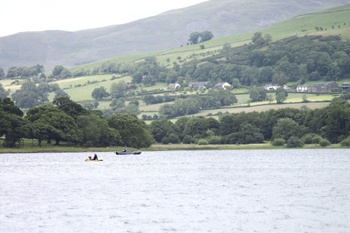Fingerprinting for lake clues

Magnetic fingerprints are marking out a ‘crime’ scene in Bassenthwaite where scientist detectives are hunting the origins of destructive sediment.
Leading the search are Lancaster University’s Professor Barbara Maher and researcher Rob Hatfield, who say the lake - listed as a Site of Special Scientific Interest - is a jewel in the Lake District landscape.
“Although home to one of only two UK populations of vendace, these endangered fish are in serious decline, partly through fine sediment coming into the lake, which silts up their spawning grounds,” said Professor Maher.
“If we can trace where this sediment is coming from, it might be possible to put measures in place to prevent it.”
Nineteen sample containers are currently in streams and becks flowing into Bassenthwaite. They catch some of the river sediment, particularly after heavy rain, when the amount from surrounding fields and fells increases.
The research has been funded by Lancaster University through its 40th Anniversary Studentship awards.
“Each waterway has very different magnetic fingerprints making it possible to identify the major culprits,” said the professor.
“Previously thought unimportant, Newlands Beck - where there are steep slopes and spoil heaps from previous mineral mines - may carry significant amounts of silt and mud. Modifications to riverbanks prevent them being deposited on flood plains naturally, pushing them straight through to the lake.
“It’s great new scientific approaches can be used to contribute to our understanding of how sediment moves from the fells to the lake. Once the trouble spots are identified, they can be dealt with.”
Funding is now being sought to carbon date the oldest silt layers in the lake bed.
It could reveal up to 8,000 years of information, showing differences in climate, human activity and river changes over the millennia.